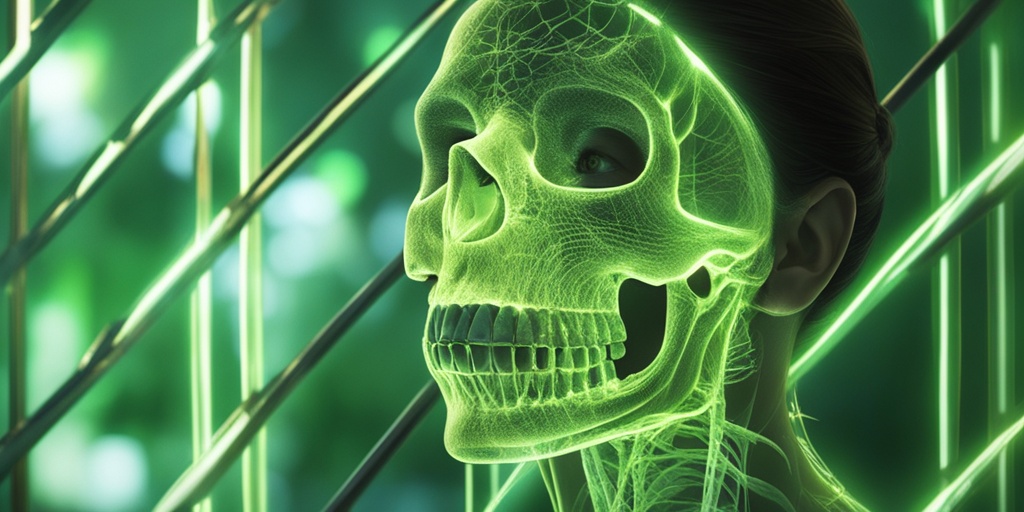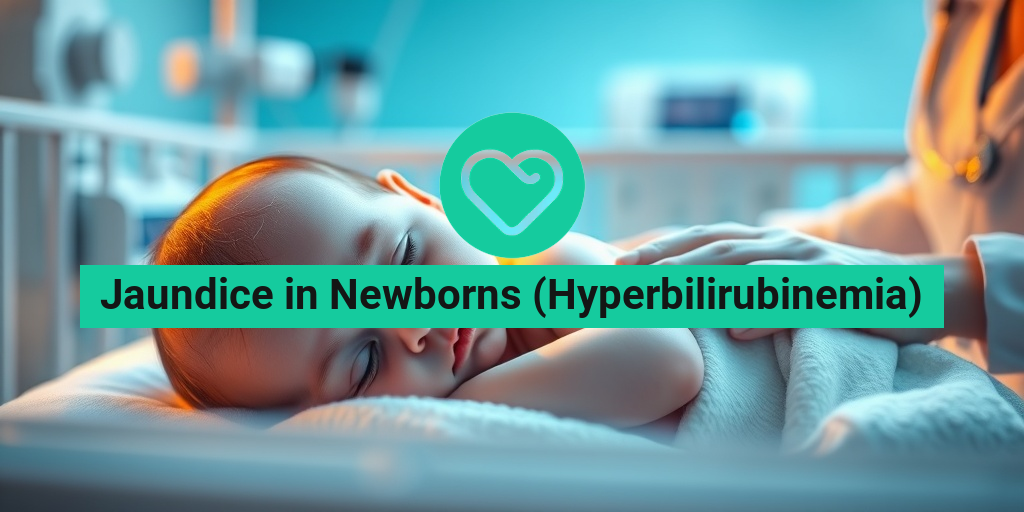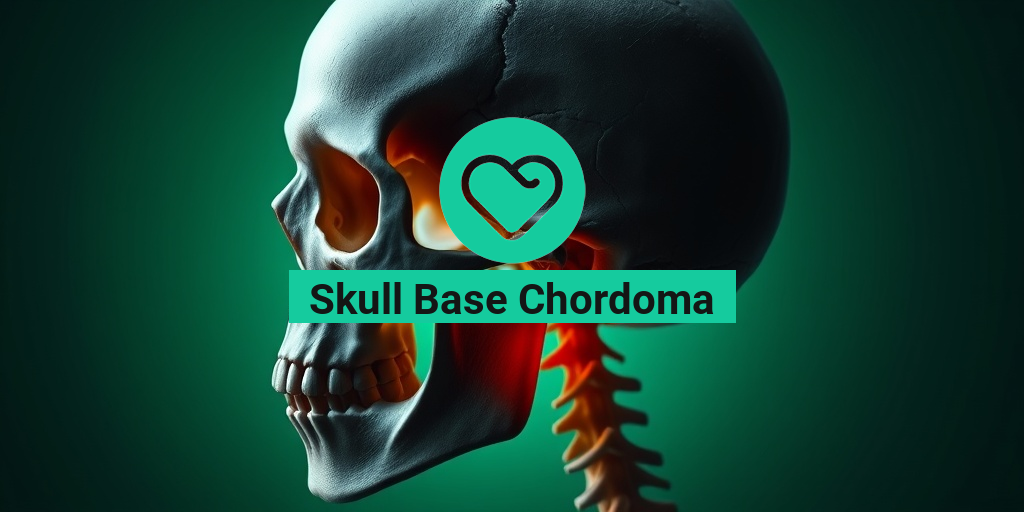“`html
What Is Gargoylism?
Gargoylism, also known as mucopolysaccharidosis type I (MPS I), is a rare genetic disorder that affects the body’s ability to break down certain complex carbohydrates known as glycosaminoglycans (GAGs). This condition is caused by a deficiency in the enzyme alpha-L-iduronidase, which is crucial for the degradation of GAGs. When these substances accumulate in the body, they can lead to a variety of health issues, particularly affecting the skeletal system, organs, and overall physical development.
Understanding the Genetic Basis
Gargoylism is inherited in an autosomal recessive pattern, meaning that a child must inherit two copies of the mutated gene—one from each parent—to develop the disorder. This genetic mutation can occur in any ethnic group, but the prevalence is relatively low, making it a rare condition.
Types of Gargoylism
There are several types of mucopolysaccharidosis, with Gargoylism primarily referring to MPS I. This condition can be further categorized into:
- Hurler Syndrome: The most severe form, characterized by significant developmental delays and physical abnormalities.
- Hurler-Scheie Syndrome: A milder form that presents with some symptoms of Hurler syndrome but with a later onset and less severe manifestations.
- Scheie Syndrome: The mildest form, where individuals may have fewer symptoms and a better quality of life.
Gargoylism Symptoms
The symptoms of Gargoylism can vary widely depending on the type and severity of the condition. However, some common symptoms include:
Physical Characteristics
Individuals with Gargoylism often exhibit distinct physical features, which may include:
- Facial Features: A broad, flat nose, thick lips, and a prominent forehead, often referred to as the “gargoyle face.”
- Short Stature: Many individuals experience growth delays, resulting in shorter-than-average height.
- Joint Stiffness: Limited mobility and joint pain due to skeletal abnormalities.
Developmental Delays
Children with Gargoylism may experience significant developmental delays, including:
- Intellectual Disability: Varying degrees of cognitive impairment.
- Speech Delays: Difficulty in developing language skills.
Organ Involvement
As GAGs accumulate in various organs, individuals may face complications such as:
- Heart Problems: Enlargement of the heart or valve issues.
- Respiratory Issues: Difficulty breathing due to airway obstruction.
- Liver and Spleen Enlargement: Known as hepatosplenomegaly, which can lead to abdominal discomfort.
Other Symptoms
Additional symptoms may include:
- Hearing Loss: Due to ear infections or structural changes in the ear.
- Vision Problems: Clouding of the cornea or retinal issues.
Seeking Help
If you or someone you know is experiencing symptoms associated with Gargoylism, it is crucial to seek medical advice. Early diagnosis and intervention can significantly improve the quality of life and management of the condition. Resources like Yesil Health AI can provide evidence-based health answers and support for those affected by this rare disorder.
In conclusion, Gargoylism is a complex condition that requires a multidisciplinary approach for management. Understanding the symptoms and seeking timely medical intervention can make a significant difference in the lives of those affected. 🌟
“`

“`html
Gargoylism Causes
Gargoylism, also known as gargoylism syndrome, is a rare genetic disorder that primarily affects the metabolism of glycosaminoglycans (GAGs). This condition is often associated with a group of disorders known as mucopolysaccharidoses (MPS). Understanding the causes of gargoylism is crucial for early diagnosis and management.
Genetic Mutations
The primary cause of gargoylism is genetic mutations that affect the body’s ability to break down GAGs. These mutations typically occur in genes responsible for producing enzymes that degrade these complex carbohydrates. When these enzymes are deficient or absent, GAGs accumulate in various tissues, leading to the characteristic symptoms of gargoylism.
Inheritance Patterns
Gargoylism is inherited in an autosomal recessive manner. This means that a child must inherit two copies of the mutated gene—one from each parent—to develop the condition. Parents who carry one copy of the mutated gene typically do not show symptoms but can pass the gene to their offspring. This inheritance pattern highlights the importance of genetic counseling for families with a history of gargoylism.
Associated Conditions
Gargoylism is often linked to other conditions, such as Hurler syndrome, which is a specific type of mucopolysaccharidosis. Individuals with Hurler syndrome exhibit similar symptoms, including skeletal abnormalities and cognitive impairment. Understanding these associations can help in diagnosing and managing gargoylism effectively.
Gargoylism Risk Factors
Identifying the risk factors associated with gargoylism can aid in early detection and intervention. While the condition is rare, certain factors can increase the likelihood of its occurrence.
Family History
A significant risk factor for developing gargoylism is a family history of the disorder. If parents are carriers of the mutated gene, their children are at a higher risk of inheriting the condition. Genetic testing can help identify carriers and provide valuable information for family planning.
Ethnic Background
Some studies suggest that certain ethnic groups may have a higher prevalence of gargoylism. For instance, individuals of Ashkenazi Jewish descent are known to have a higher incidence of genetic disorders, including mucopolysaccharidoses. Awareness of these demographic factors can assist healthcare providers in assessing risk and recommending appropriate genetic counseling.
Age of Parents
Advanced parental age, particularly maternal age, has been associated with an increased risk of genetic disorders. While this is a general trend observed in various genetic conditions, it is essential for prospective parents to be aware of this factor when considering family planning.
Environmental Factors
While gargoylism is primarily a genetic disorder, some environmental factors may play a role in the expression of symptoms. For example, exposure to certain toxins during pregnancy could potentially impact fetal development. However, more research is needed to establish a direct link between environmental factors and the onset of gargoylism.
In conclusion, understanding the causes and risk factors associated with gargoylism is vital for early diagnosis and management. Genetic mutations, family history, and ethnic background are key elements that contribute to the likelihood of developing this condition. If you suspect that you or a family member may be at risk, consulting with a healthcare professional for genetic testing and counseling is highly recommended. 🧬
“`

“`html
Gargoylism Diagnosis
Gargoylism, also known as mucopolysaccharidosis type I (MPS I), is a rare genetic disorder that affects the body’s ability to break down certain types of sugar molecules. This condition can lead to a variety of symptoms, including distinctive facial features, skeletal abnormalities, and cognitive impairment. Diagnosing gargoylism can be complex, as it often requires a combination of clinical evaluation, genetic testing, and biochemical analysis.
Clinical Evaluation
The first step in diagnosing gargoylism typically involves a thorough clinical evaluation by a healthcare professional. During this evaluation, the doctor will:
- Review the patient’s medical history and family history.
- Conduct a physical examination to identify characteristic symptoms, such as a gargoyle-like face, which may include a prominent forehead, flattened nose, and thick lips.
- Assess for other symptoms, including joint stiffness, hearing loss, and developmental delays.
Genetic Testing
Once a clinical suspicion of gargoylism is established, genetic testing is often recommended. This testing can confirm the diagnosis by identifying mutations in the IDUA gene, which is responsible for producing an enzyme needed to break down glycosaminoglycans (GAGs). In individuals with gargoylism, this enzyme is deficient or absent, leading to the accumulation of GAGs in various tissues.
Biochemical Analysis
In addition to genetic testing, biochemical analysis of urine can also aid in the diagnosis. Patients with gargoylism typically have elevated levels of GAGs in their urine, which can be detected through specific laboratory tests. This analysis helps to confirm the diagnosis and assess the severity of the condition.
Gargoylism Treatment Options
While there is currently no cure for gargoylism, several treatment options are available to manage symptoms and improve the quality of life for affected individuals. Treatment plans are often tailored to the specific needs of each patient and may include:
Enzyme Replacement Therapy (ERT)
One of the most promising treatments for gargoylism is enzyme replacement therapy (ERT). This therapy involves administering a synthetic version of the enzyme that is deficient in individuals with the condition. ERT can help reduce the accumulation of GAGs in the body, potentially alleviating some of the symptoms associated with gargoylism. Regular infusions are typically required, and while ERT may not reverse existing damage, it can help prevent further complications.
Supportive Care
Supportive care is crucial for managing the symptoms of gargoylism. This may include:
- Physical therapy: To improve mobility and flexibility.
- Occupational therapy: To assist with daily living activities.
- Speech therapy: To address communication difficulties.
- Regular monitoring: To track the progression of the disease and manage any emerging complications.
Surgical Interventions
In some cases, surgical interventions may be necessary to address specific complications associated with gargoylism. For example, individuals with severe skeletal abnormalities may require orthopedic surgery to correct deformities or improve mobility. Additionally, surgeries may be needed to address issues such as hearing loss or respiratory problems.
Genetic Counseling
For families affected by gargoylism, genetic counseling can provide valuable information about the condition, its inheritance patterns, and the risks for future pregnancies. This counseling can help families make informed decisions and prepare for the challenges associated with the disorder.
In conclusion, while gargoylism presents significant challenges, early diagnosis and a comprehensive treatment plan can greatly enhance the quality of life for those affected. Ongoing research continues to explore new therapies and interventions, offering hope for improved outcomes in the future. 🌟
“`

“`html
Gargoylism Management Strategies
Gargoylism, also known as gargoylism syndrome, is a rare genetic disorder that primarily affects the metabolism of glycosaminoglycans (GAGs). This condition can lead to a variety of symptoms, including skeletal abnormalities, cognitive impairment, and distinctive facial features often referred to as the gargoylism face. Managing this complex condition requires a multifaceted approach tailored to the individual needs of the patient. Here are some effective management strategies:
1. Early Diagnosis and Intervention
Early diagnosis is crucial in managing gargoylism effectively. Genetic testing can confirm the diagnosis, allowing for timely interventions. Parents and caregivers should be vigilant for early signs, such as developmental delays or unusual physical features, and consult healthcare professionals promptly.
2. Multidisciplinary Care Team
Managing gargoylism often requires a team of specialists, including:
- Pediatricians
- Geneticists
- Orthopedic surgeons
- Neurologists
- Physical and occupational therapists
This collaborative approach ensures that all aspects of the patient’s health are addressed, from physical to cognitive needs.
3. Symptomatic Treatment
Patients with gargoylism may experience a range of symptoms that require specific treatments:
- Physical Therapy: Helps improve mobility and strength.
- Occupational Therapy: Assists with daily living activities.
- Speech Therapy: Addresses communication difficulties.
- Medications: May be prescribed to manage pain or other specific symptoms.
4. Nutritional Support
A well-balanced diet is essential for individuals with gargoylism. Nutritional support can help manage symptoms and improve overall health. Consulting with a dietitian who understands the unique needs of patients with metabolic disorders can be beneficial.
5. Regular Monitoring
Regular follow-ups with healthcare providers are vital to monitor the progression of the disease and adjust treatment plans as necessary. This includes:
- Routine physical examinations
- Imaging studies to assess skeletal changes
- Cognitive assessments to track developmental progress
6. Support Groups and Resources
Connecting with support groups can provide emotional support and practical advice for families affected by gargoylism. Organizations dedicated to rare diseases often offer resources, including educational materials and community connections.
Gargoylism Outlook and Prognosis
The prognosis for individuals with gargoylism can vary significantly based on several factors, including the severity of symptoms and the timing of interventions. Understanding the potential outcomes can help families prepare for the future.
1. Life Expectancy
While gargoylism is a serious condition, advancements in medical care have improved life expectancy for many patients. With appropriate management, some individuals can lead fulfilling lives into adulthood. However, severe cases may lead to complications that can affect longevity.
2. Quality of Life
The quality of life for individuals with gargoylism largely depends on the effectiveness of management strategies. Early intervention and ongoing support can significantly enhance daily functioning and emotional well-being. Families play a crucial role in advocating for their loved ones and ensuring they receive the necessary care.
3. Cognitive Development
Cognitive outcomes can vary widely among individuals with gargoylism. Some may experience significant developmental delays, while others may have mild impairments. Early educational interventions and tailored learning strategies can help maximize cognitive potential.
4. Physical Health Challenges
Individuals with gargoylism may face various physical health challenges, including:
- Skeletal deformities
- Joint problems
- Respiratory issues
Regular monitoring and proactive management of these issues are essential to maintain physical health and mobility.
5. Emotional and Social Support
Emotional and social support is vital for individuals with gargoylism and their families. Engaging with community resources, therapy, and support groups can foster resilience and improve overall well-being. Building a strong support network can help navigate the challenges associated with this condition.
In conclusion, while gargoylism presents significant challenges, effective management strategies and a positive outlook can greatly enhance the lives of those affected. With ongoing research and advancements in treatment, there is hope for improved outcomes and quality of life for individuals living with this condition. 🌟
“`

“`html
Frequently Asked Questions about Gargoylism
What is Gargoylism?
Gargoylism refers to a group of genetic disorders characterized by the accumulation of glycosaminoglycans (GAGs) in the body. This condition is often associated with various syndromes, including Hurler syndrome, which is a type of mucopolysaccharidosis.
What are the symptoms of Gargoylism?
The symptoms of gargoylism can vary but commonly include:
- Distinctive facial features, often described as “gargoyle-like”
- Short stature
- Joint stiffness and deformities
- Heart and respiratory issues
- Developmental delays
How is Gargoylism diagnosed?
Diagnosis of gargoylism typically involves:
- Clinical evaluation of symptoms
- Genetic testing to identify specific mutations
- Urine tests to measure GAG levels
What is the treatment for Gargoylism?
While there is no cure for gargoylism, treatment options may include:
- Enzyme replacement therapy
- Supportive care for symptoms
- Physical therapy to improve mobility
Is Gargoylism hereditary?
Yes, gargoylism is a genetic disorder, meaning it can be inherited from parents who carry the mutated genes associated with the condition.
What is the difference between Gargoylism and Hurler Syndrome?
Gargoylism is often used interchangeably with Hurler syndrome, as it is one of the most common forms of this condition. Hurler syndrome is specifically characterized by severe symptoms and early onset, while gargoylism can refer to a broader range of related disorders.
Can Gargoylism be prevented?
Currently, there is no known way to prevent gargoylism since it is a genetic disorder. Genetic counseling may be beneficial for families with a history of the condition.
Where can I find more information about Gargoylism?
For more detailed information about gargoylism, consider visiting reputable medical websites, genetic disorder organizations, or consulting with a healthcare professional.
“`




